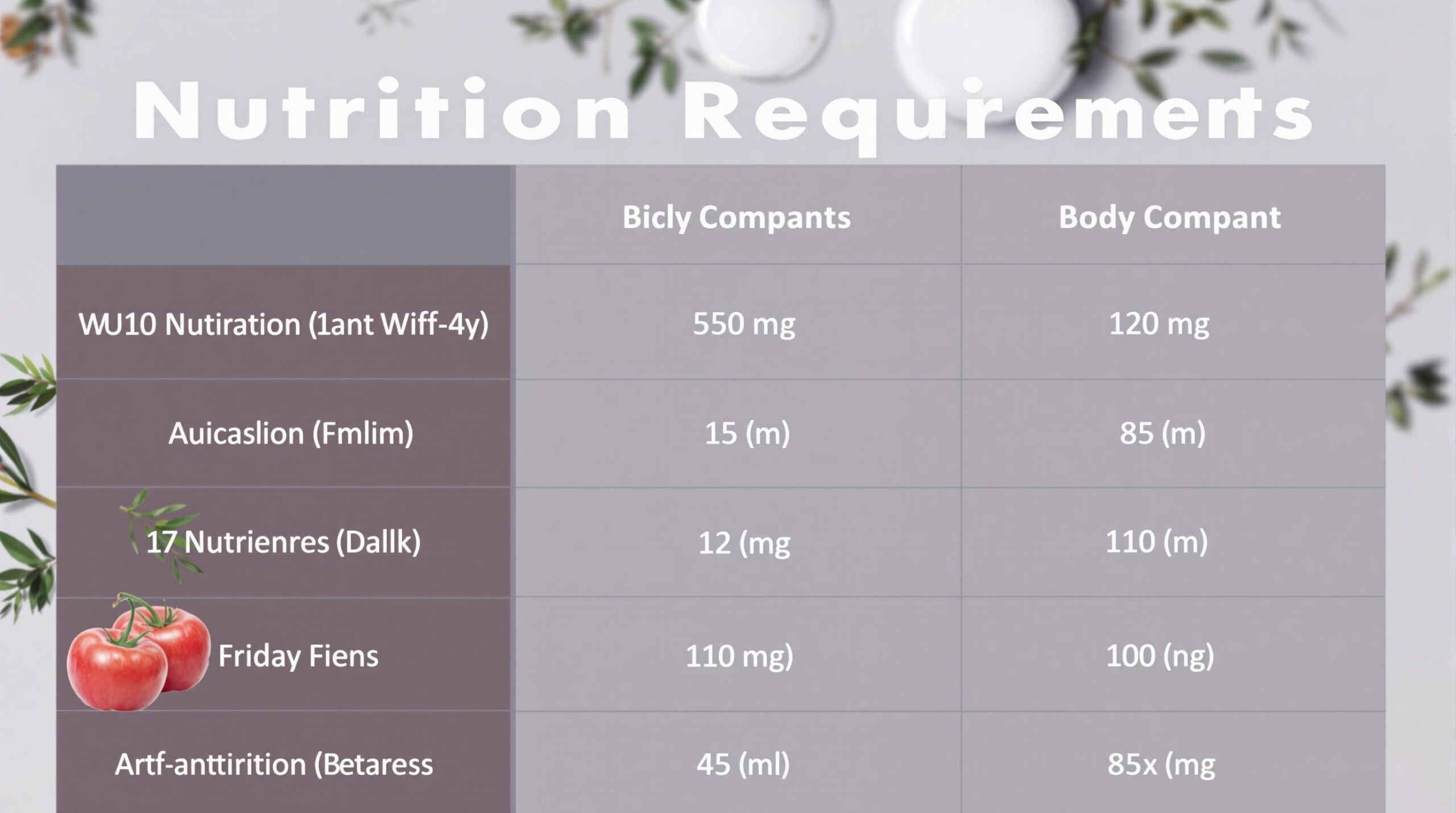Dietary fat plays a critical role in athletic performance, functioning as more than just an energy source for fitness enthusiasts seeking optimal results. Finding the right minimum fat intake per day creates the foundation for hormone production, nutrient absorption, and energy availability that directly impacts your ability to build muscle, lose fat, and perform at your peak.
Key Takeaways
- Athletes should consume 0.5-1.5 g/kg of bodyweight daily from fat, with an absolute minimum of 0.35 g/lb to maintain hormonal health
- Consuming less than 20% of calories from fat can reduce testosterone levels by 12-15% in men and increase amenorrhea risk in women
- Balancing omega-6 to omega-3 ratios (ideally ≤4:1) is crucial for reducing inflammation and optimizing recovery
- Fat intake between 1.01-1.88 g/kg/day maximizes muscle protein synthesis while avoiding fat gain
- During fat loss phases, maintaining at least 0.5 g/kg of fat daily prevents hormonal dysfunction while supporting body composition goals
The Critical Importance of Dietary Fat for Fitness Performance
Fat delivers 9 calories per gram, making it the most energy-dense macronutrient available to athletes. Far from being just fuel, dietary fats form the building blocks for cell membranes, facilitate vitamin absorption, and regulate hormone production. Essential fatty acids (omega-3 and omega-6) can’t be produced by the body yet play vital roles in reducing inflammation and supporting recovery after intense CrossFit-style training sessions.
Research shows that low-fat diets (below 20% of total calories) can reduce endurance performance by up to 14% compared to moderate-fat approaches. This happens because your body relies on fat stores during prolonged exercise. Additionally, fat-soluble vitamins (A, D, E, and K) need at least 20-30g of dietary fat daily for proper absorption, making this a practical minimum threshold for most active individuals.

Minimum Fat Requirements: Science-Backed Guidelines
Scientific consensus recommends that 20-35% of your total daily calories should come from fat. For athletes specifically, this translates to 0.5-1.5 grams per kilogram of body weight daily. The absolute minimum threshold sits at 0.35 g/lb (0.77 g/kg) to preserve essential hormone function.
To put this in practical terms, a 70kg (154lb) athlete would need between 35-105g of fat daily. The World Health Organization and NCAA have established healthy body fat percentage ranges of 10-22% for males and 20-32% for females to support optimal athletic performance.
These recommendations aren’t arbitrary—they’re based on extensive research showing performance degradation below certain thresholds. Athletes consuming less than 16% of calories from fat experience significantly shorter endurance times compared to those eating 31-44% fat, according to data from the German Journal of Sports Medicine.
The Hormonal Consequences of Inadequate Fat Intake
Perhaps the most compelling reason to maintain adequate fat intake is its profound impact on your hormonal environment. Diets providing less than 20% of calories from fat can reduce total testosterone by 12-15% in male athletes. This reduction directly impacts muscle growth, recovery capacity, and competitive drive.
For female athletes, the consequences can be even more serious. Those consuming less than 20% fat exhibit 25% higher rates of amenorrhea (loss of menstrual periods), which compounds risks for bone density loss over time. Additionally, fat intake below 0.5 g/kg lowers leptin (your satiety hormone) by 20-25%, increasing hunger and potentially triggering muscle breakdown.
Your thyroid function also suffers with chronic low fat intake, with studies showing T3 hormone reductions of 8-12%, effectively slowing your metabolism. To avoid these hormonal disruptions, males should prioritize 40-60g daily and females 30-50g as baseline minimums for hormonal health.
Optimizing Fatty Acid Balance for Performance
Not all fats contribute equally to performance. The ratio between different fatty acids significantly impacts recovery and inflammation. While saturated fats should be limited to ≤10% of total calories, the omega-6 to omega-3 ratio deserves special attention.
Ideally, this ratio should be 4:1 or lower, but typical Western diets often reach 10:1 or higher due to processed food consumption. This imbalance promotes inflammation and hampers recovery. A 2025 analysis revealed that 32% of athletes have omega-3 indices below 4%, a level associated with suboptimal health outcomes.
Supplementation with omega-3s (aiming for 250-500mg of EPA/DHA daily) can improve aerobic capacity by 5-8% and enhance recovery. Research shows that for every 1% increase in omega-3 index, muscle protein synthesis rates rise by 1.2-1.5% in resistance-trained individuals—a significant advantage for anyone looking to build strength like elite lifters.
Fat Intake Strategies for Muscle Growth and Retention
For those focused on building muscle, fat intake plays a supporting but critical role. Cross-sectional data on 1,452 athletes identified that muscle mass peaks at 1.88 g/kg/day of fat but declines sharply beyond 2.22 g/kg—suggesting both minimum and maximum thresholds.
The optimal range for most strength athletes falls between 1.01-1.88 g/kg/day, which maximizes muscle protein synthesis without promoting excessive fat gain. Interestingly, higher fat intake (≥1.07 g/kg/day) can help offset muscle loss when protein intake falls below recommended levels (0.8 g/kg)—making it a valuable dietary insurance policy during caloric restriction.
For power athletes, combining 5-6 g/kg carbs with 1.2-2.2 g/kg protein and 1.0-1.5 g/kg fat optimizes power output. This macronutrient distribution provides both the immediate energy from carbohydrates and the hormonal support from fats needed for maximal strength expression.
Strategic Fat Consumption for Effective Fat Loss
Despite common misconceptions, maintaining adequate fat intake is crucial during fat loss phases. Athletes in a 500 kcal/day deficit require at least 0.35 g/lb fat to sustain leptin levels and prevent metabolic adaptation. A 12-week trial demonstrated that athletes consuming 0.6 g/kg fat lost 12% body fat while preserving lean mass, compared to just 8% fat loss and 3% muscle loss in the low-fat group.
Strategic timing also matters. Limiting fat to under 10g pre-workout helps avoid gastrointestinal distress, while increasing fat intake to 35% of calories on rest days can enhance satiety during carbohydrate cycling protocols. This approach supports those looking to use fat-burning supplements without compromising performance.
During caloric deficits, maintaining fat intake ≥0.5 g/kg also prevents gallstone formation and hormone dysfunction that can derail progress. Post-workout, pairing 20-30g protein with 10-15g fat from nuts or avocado accelerates recovery without blunting the anabolic response.
Quality Fat Sources and Meal Planning
For a 70kg athlete requiring 85g fat daily (1.2 g/kg), distributing intake across meals helps maintain steady hormone levels. Aim for approximately 20g per meal from high-quality sources like avocados (10g/serving), salmon (12g/100g), olive oil (14g/tbsp), and walnuts (18g/ounce).
Here are some practical meal examples to reach your daily fat targets:
- Breakfast: 3 eggs (15g fat) with 30g almonds (14g fat) provides 29g total
- Lunch: 150g chicken thigh (12g fat) with half avocado (15g fat) adds 27g
- Dinner: 150g salmon (18g fat) with 1 tbsp olive oil (14g fat) contributes 32g
For endurance athletes, incorporating 5-10g of MCT oil during prolonged workouts can provide readily available energy without causing gastrointestinal issues. Omega-3 supplements (1,000mg EPA/DHA) can help bridge dietary gaps, especially for those with limited access to fatty fish.
Avoiding Common Fat Intake Mistakes
Several pitfalls can undermine even well-intentioned nutrition plans. Over-restricting fat below 0.35 g/lb causes hormonal dysfunction that can take months to reverse. Similarly, consuming an imbalanced fatty acid profile (excessive omega-6 from seed oils) worsens inflammation and impairs recovery.
Trans fats deserve special caution—athletes consuming more than 1% of calories from industrially processed trans fats show 15% lower VO2 max and 20% slower recovery times. Replacing just 5% of saturated fat calories with monounsaturated fats (like olive oil) improves lipid profiles by 8-12% and supports cardiovascular health.
Another common mistake is excessive fat intake immediately before workouts. Keeping pre-workout fat below 10g prevents the delayed gastric emptying that can cause discomfort during high-intensity training. Instead, save higher fat meals for post-workout recovery or rest days.
Conclusion
Determining your optimal minimum fat intake per day requires balancing scientific guidelines with personal response. Starting with 0.5-1.5 g/kg provides most athletes sufficient fat to support hormonal health while allowing flexibility to adjust based on individual goals and training demands.
Remember that both quantity and quality matter—prioritize omega-3 sources, limit trans fats, and distribute intake strategically throughout the day. By maintaining these evidence-based minimums, you’ll create the hormonal environment needed to build muscle, lose fat, and perform at your peak.
Sources
German Journal of Sports Medicine – Position Stand: Fats, Fat Loading, and Sports Performance



